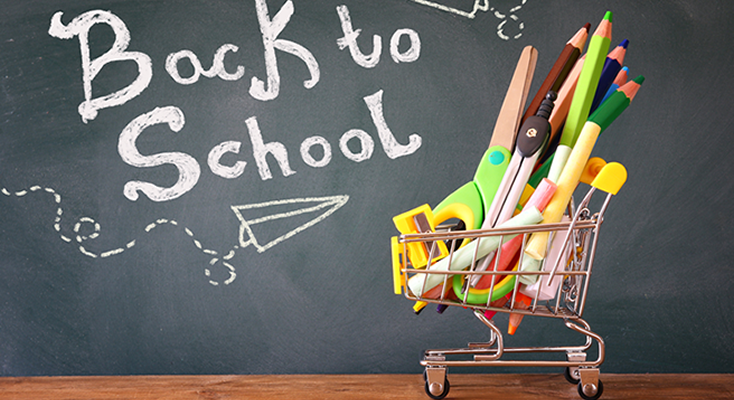Back-to school is the second largest shopping season for retailers, following closely behind Christmas. While some shoppers and retailers may believe that back-to-school shopping is primarily comprised of pencils, binders and notebooks, the retailers who find the most success extend the scope of back to school readiness far beyond classroom supplies. Out of the 77 million students in school, 19.1 of those are college and graduate students. These students aren’t just looking for school supplies – they’re restocking on needs for their dorms and updating their wardrobe. They’re also stocking up on personal care items, from makeup to face cleansers to shampoo and more, giving retailers an opportunity to promote new products and try to win new brand loyalty.
One retailer that has gone above and beyond in not only expanding the product scope of their back-to-school shopper marketing, but the range of program tactics used, is Walgreens. Walgreens leveraged the power of influencers, personalization and social responsibility to give their back-to-school marketing campaigns an all new millennial appeal.
The Power of Influencers
To increase integration of their mobile app into the back-to-school shopping experience, Walgreens began a campaign last summer called #MyWalgreensApp that leveraged influencers to promote the ease and friendly user experience of their upgraded mobile app. Walgreens stressed the importance of using influencers that could support the brand, while also staying true to the influencers’ own personal stories. They partnered with Danielle Gray of “The Style & Beauty Doctor” blog and Katie Manwaring of “Katie’s Bliss” blog to endorse the ease of printing photos directly from their phones. The overall campaign encouraged a 25% increase in app downloads and generated more than 222 million impressions.
“To buy premium digital display ads delivering equivalent impressions, it would have cost more than $2, 300, 000,” Calvin Peters, Walgreens’ public relations and digital communications manager said in a Path to Purchase Institute interview. Influencers are a great way for businesses to encourage purchases from consumers by using a face that consumers have a personal connection to, boosting the chances for a customer to personally connect with the product.
Personalization
To enhance the personalization of in-store shopper marketing, Walgreens found a way to integrate on-shelf products with personalized digital experiences. Clear skin is an essential to starting school off on the right foot, and consumers often spend a great deal of time looking for the right product for their skin. Neutrogena simplified the acne product selection process with a quiz that takes less than two minutes and asks the shopper about their skin type, breakout frequency and skin sensitivity. Shoppers were driven to the quiz by large in-aisle POP displays that enticed shoppers to visit the quiz link. At the end of the quiz, the shopper receives their own personalized acne care routine, which includes a list of the products they suggest, price points and product reviews. Shoppers looking to purchase the Neutrogena products suggested to them were also offered a $2 off coupon when they used their Walgreens card.
Social Responsibility
Another way in which Walgreens amplified their back-to-school marketing was by incorporating social responsibility. They partnered with Me to We, an innovative social enterprise that utilizes the best business practices while increasing social awareness. The Me to We product line at Walgreens includes colored pencils, notebooks and backpacks, each featuring their own unique code that allows customers to go online and see where their purchase made a positive impact. 50% of the profits made from Me to We products go directly to empower and build WE Charity communities in underdeveloped countries.
This isn’t the first time Walgreens worked with Me to We to leverage the power of charitable community. Walgreens and Unilever paired up last year to run a campaign called “Give H2oPE to Others,” which donated 5 gallons of clean water to communities in need for each product purchased. The campaign generated a 50% incremental dollar sales lift during the season and a 16% bump in store traffic. Not only did the campaign win a Shopper Marketing Effie, but it helped spread awareness of the global water crisis and shoppers felt rewarded by helping out.
As students start school and the 2017 shopping season comes to a close, we can expect Walgreens to continue to analyze the trends in shopping behavior and use these to push successful campaigns. Retailers should look to them for inspiration when building their back-to-school strategies.
Sources:
https://p2pi.org/article/neutrogena-walgreens-address-acne-bts
https://p2pi.org/article/walgreens-bts-shoppers-can-make-track-impact
https://p2pi.org/article/walgreens-deploys-influencers-tout-its-apps-capabilities


Comments are off this post